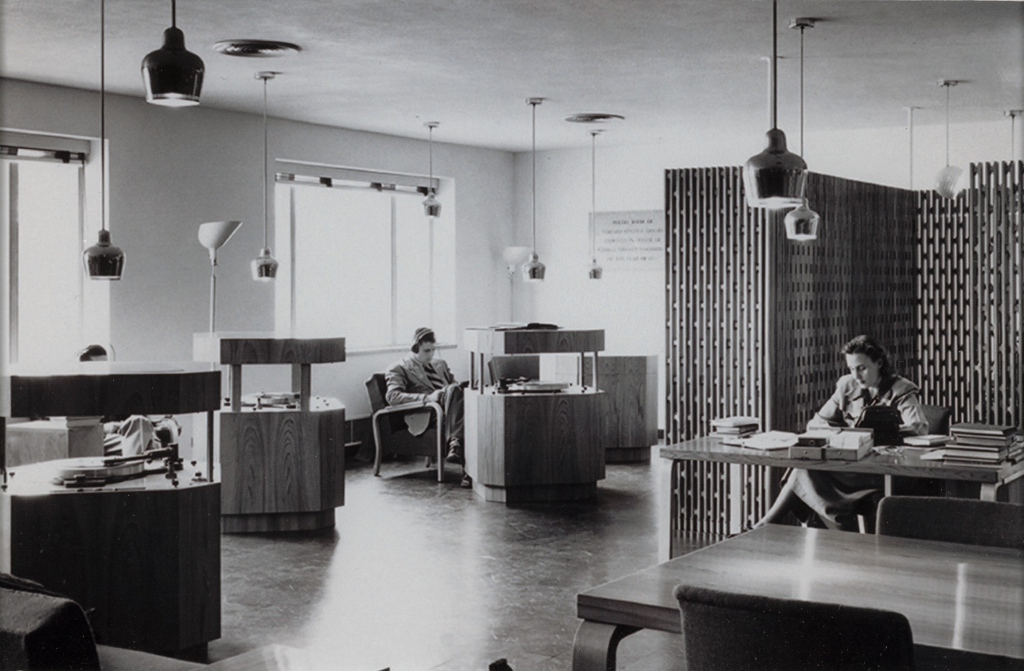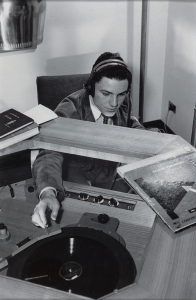Harvard’s “Vocarium” Offers A Unique Record Of History

Harvard University, Houghton Library
Imagine a library for voices. A place where you can sit around a table and listen to recordings with friends. That was the Harvard Vocarium. It all started with one man: Frederick Packard. Simply put, Packard loved the spoken word.
“Frederick Clifton Packard is my grandfather on my father’s side,” explains Josie Packard, granddaughter of Frederick Packard. “It was not uncommon for one of them to break into a recitation just sort of spontaneously after dinner. Maybe we were washing dishes. I know how unusual that sounds for most people in their family culture but for me, it was the most natural thing in the world.”
Packard joined Harvard’s faculty in 1928, as the school’s first Professor of Public Speaking. “Once he was able to record the voice, there was no question that was no question that that’s what he should do,” says Mary Walker Graham assistant curator of the university’s Woodbury Poetry room.
Packard relied on audio records as both a research and teaching tool. At one point, using university equipment, he recorded every student as they entered and left the school to study their accents. He also taught a popular public speaking course where the students had to make recordings, students like a young future president, John F. Kennedy.
Packard had more than scholarly motivations, however. He joined Harvard’s faculty at a time of rising fascism, with totalitarian leaders who used effective oratory to help gain power. Packard thought public speaking education was vital for defending democracy, and that listening to recordings of excellent literature was an important part of that education. In 1933, he started the Harvard Vocarium record label. It focused on poets.

Harvard University, Houghton Library
The label advertised in magazines and newspapers, marketing themselves to people who wanted to listen to poetry at home. Packard took advantage of teaching at a school with a large number of visiting writers, and so he recorded many of the major poets of the mid 20th century, authors like Marianne Moore, W.H. Auden, and T.S. Eliot
In fact, in 1933, when Eliot was first recorded by Packard, it was a momentous occasion, as Eliot’s visit was considered by people at the time to be the school’s recognition of the importance of modern poetry. The Vocarium contained some diversity, but it’s output reflect the tastes of mid-20th-century academia: “His decisions about who to contact were generated by interest and I think his interest was in white guys,” says Josie Packard.
Eventually, the Vocarium became its own space. When Harvard Lamont’s Library opened in 1949, Packard worked with a Finnish architect to design an area dedicated to poetry and the Vocarium’s collection.
The Vocarium was an immediate hit. The year it opened, it got over 4,000 student visits in one semester. Packard hoped that one day, Vocariums would open in schools and libraries across the country. But that didn’t happen. In 1955, Harvard withdrew their support for the record label. Not long after, Packard developed the early symptoms of Alzheimer’s and he cut back on his work schedule. The listening room survived, but fewer students came to visit.
“And after he retired his entire department was carved out of the university,” says Josie Packard.
But his work lives on. In 2003, the Library of Congress established the National Recording Registry. You know how each year the Library of Congress saves important movies for posterity? Well, this is the same thing but for sound, and the Harvard Vocarium collection was one of its inaugural selections, a recognition of its importance. Over the past decade, Harvard has begun digitizing the collection and putting highlights online. Now people around the world can all enjoy the power of the spoken word that Packard held so dear.
